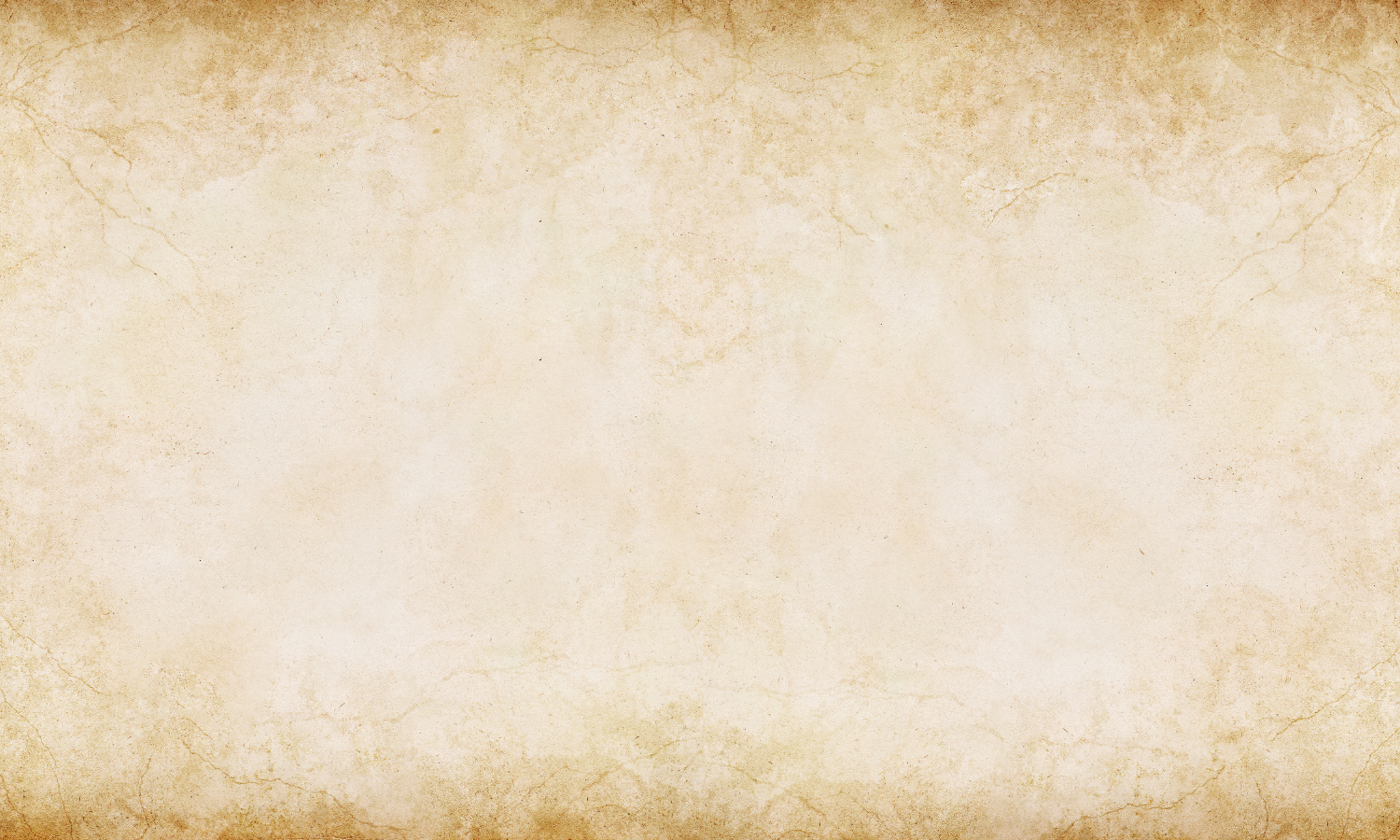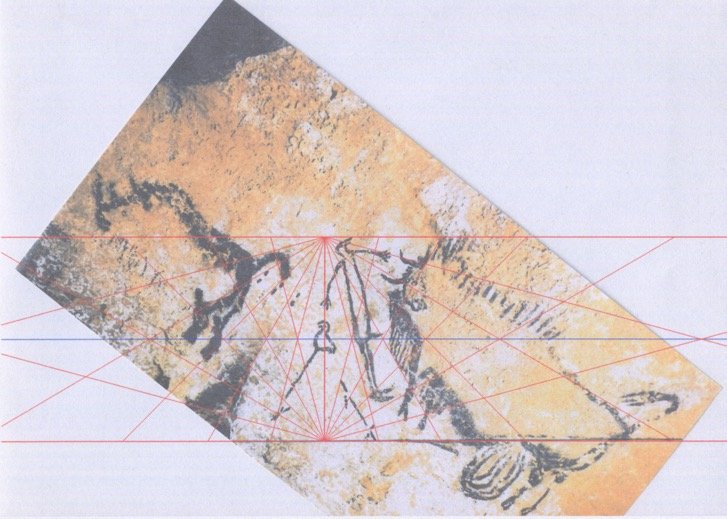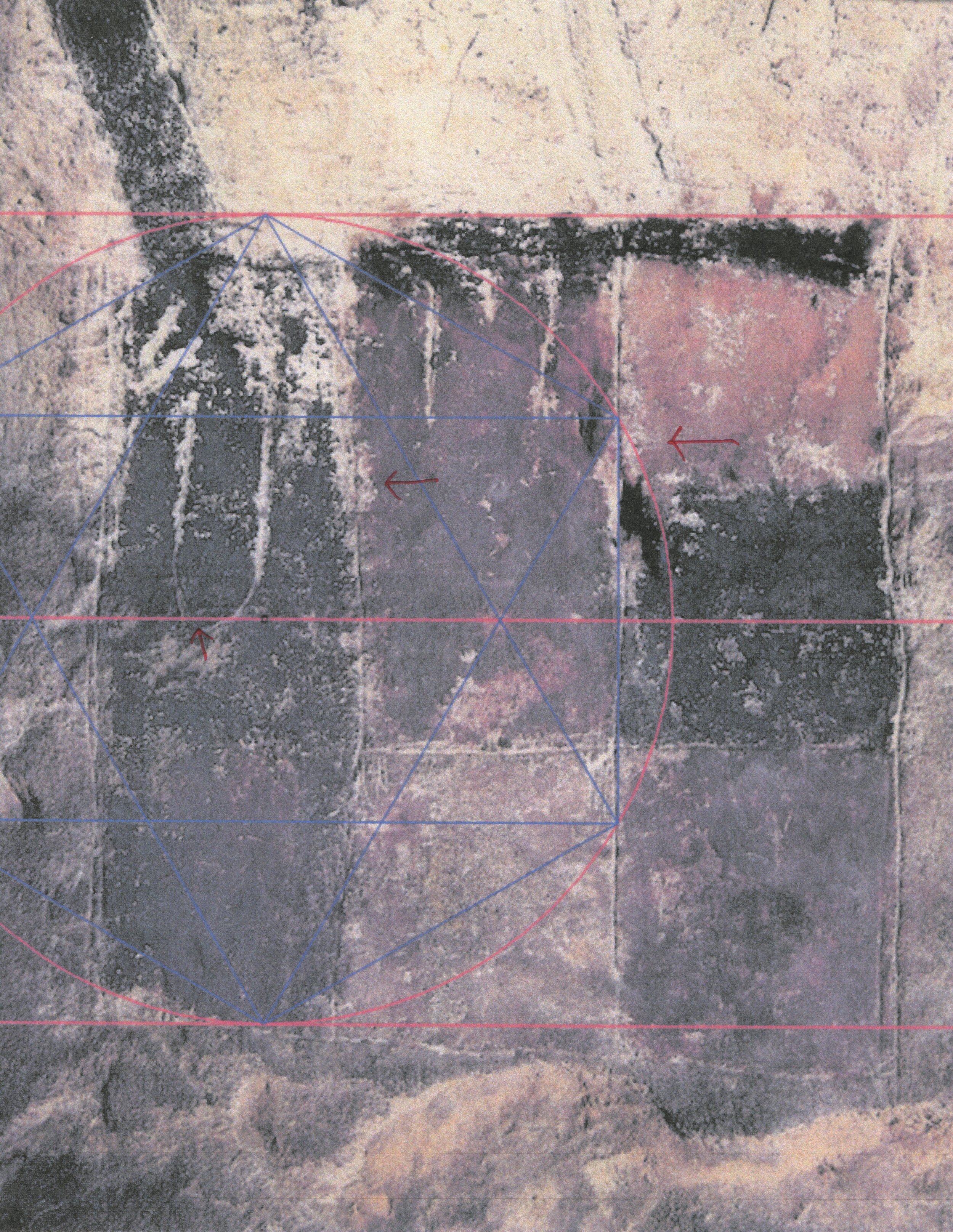
ART MOTIFS
145-149
LASCAUX CAVE
Known as ‘The Bison Hunt’, this cave art found in France is dated to c.15,000 BCE after which the cave was made supposedly inaccessible by a ceiling collapse that blocked the entrance. The cave was not rediscovered until 1940 when two boys found another entrance. There is more to this art than has not been obvious to the more than casual observer. After staring at this mage and looking at 60/60/60 degree triangles for quite a while it became fairly obvious that the bird is sitting on top of an incomplete equilateral triangle. To test this I reoriented the image in order to use the Portal Grid software by slightly rotating it and creating an x-axis using the ‘spear’ as a baseline. The results seen in Fig.144 seem to suggest someone was measuring or geometrically designing something possibly as early as 15,000 BCE but more likely something original that someone may have modified very much later. (See Fig.148). Carbon dating the pigments in different places should settle this question. Either way there are several details more obvious than others that have been overlooked regarding this Bison Hunt, one being that the bison face appears to be that of a shaman. Each of the images that follow below have at least three eyes aligned by the software.
Fig.145 Bison Hunt c. 15,000 BCE Lascaux Cave France
Fig. 145 Bison Hunt c. 15,000 BCE Lascaux Cave France
The Portal Grid software appears to be showing the bird sitting atop an incomplete 60/60/60 degree equilateral triangle. The 60-degree downward ray left of center passes through its eye. The 15-degree downward ray left of center passes through the jaw and eye of the ‘hunter’. The 75-degree upward ray right of center passes through the bison-shaman’s eye. Note the centerline and the 90-degree y-axis intersecting at the ‘origin’ just below the penis.

Fig. 146 Bison Hunt c. 15,000 BCE Lascaux Cave France
The 90-degree y-axis passes through the bird’s eye with the 60-degree downward ray right of center passing through the shaman’s eye and the 15-degree downward ray right of center passing through the hunter’s eye.

Fig. 147 Bison Hunt c. 15,000 BCE Lascaux Cave France
The hunter’s eye A, the bird’s eye B, and the shaman’s eye C form an isosceles triangle with 51 or 52 degree angles (364/52=7). These three eyes may represent earth’s three celestial dynamics, its orbit, rotation, and tilted polar axis. The bird and its eye at the apex of the equilateral triangle may not only symbolize earth’s polar axis as the Square Root of Three but also the Pole Star on the Vernal Equinox. The hollow hunter and its outline shown at the Celestial Equator angle with bird like ‘hands’ and erect penis symbolizes earth’s rotation and or its orbit around the sun and the fertility of its axial tilt. The two feet may also symbolize the winter and summer solstices. The bison-shaman’s eye along with the rest of the bison symbolizes the earth and its orbit around the sun. Point D is the eye of what appears to be a newborn baby bison that the bison-shaman seems to be facing. Note the two straight angled lines that define its jaw and snout. Point E is the rhinoceros’ eye that is on a line with the bird’s eye B, the wrist F of the ‘beastie’ with the square jaw, long nose and left arm thrown up over its head, and ending with what looks to be a wolf with a very square brow G whose front legs may also double as the bison’s rear legs. Note the tripartite tail. Also note how the bison’s mane and beard could be interpreted as the wings of the shaman.

Fig. 148 Bison Hunt c. 15,000 BCE Lascaux Cave France
The 15-degree downward ray left of center is aligned to the shaman’s eye. The 60-degree upward ray left of center is aligned to the bird’s back. The 30-degree downward ray right of center is aligned to the baby bison’s eye. The 90-degree y-axis passes through the eye of a ‘beastie’ with a very long nose and square jaw. What are believed to be the entrails of the bison may actually be encoding earth’s orbit and rotation with the motif in the center mimicking earth’s axial tilt. This ‘beastie’ with the square face and arm thrust over its head appears to be riding or skating along the plane of the ecliptic.

Fig.149 Vestibule c. 15,000 BCE Lascaux Cave
Fig. 149 Vestibule c. 15,000 BCE Lascaux Cave France
What proof might there be that someone may have altered the original Bison Hunt? Right angle motifs are very rare and grids are virtually non-existent in Pleistocene cave art. This grid is carved onto the vestibule that leads to the Bison Hunt and possibly represents some type of preparatory activity prior to descending to the deepest part of the cave. The red arrow at the left points to the tip of a flaccid penis touching the Portal Grid software centerline. The red arrow to the right points to some kind of beastie peering out from behind a vertical grid line staring out across an empty space towards another parallel grid line. Those familiar with the optical illusion of the cube shifting from a two-dimensional grid into a three-dimensional cube will better understand the optical trick pointed to by the red arrow at the right. There are faces of a man and a woman located where the chords and arcs of the cube meet. The woman is shown in profile facing to the left possibly towards the beastie with an open mouth and appears to be kissing the chord and the grid line it is aligned to, while her eye tangents the outside edge of the arc. The male face placed above hers and outside of the arc faces to the right, has quite a bit of hair and looks to be wearing spectacles. His wide-open mouth and her eye double as the same motif. This image shifts back and forth between the woman in profile looking to the left and the male facing to the right. The narrative appears to represent some sort of sexual stimulation prior to descending down to the deepest part of the cave where the Bison Hunt is located, the womb of the earth. If those are spectacles that the man is wearing some of this art might date to the 15th or 16th century a time when France was probably still “debating” geocentrism.




